A colorful mural sits just a few steps before the NoMa-Gallaudet U New York Avenue Metro station entrance. A splash of color on the drab grey concrete, the design spells out NoMa in American Sign Language (ASL).
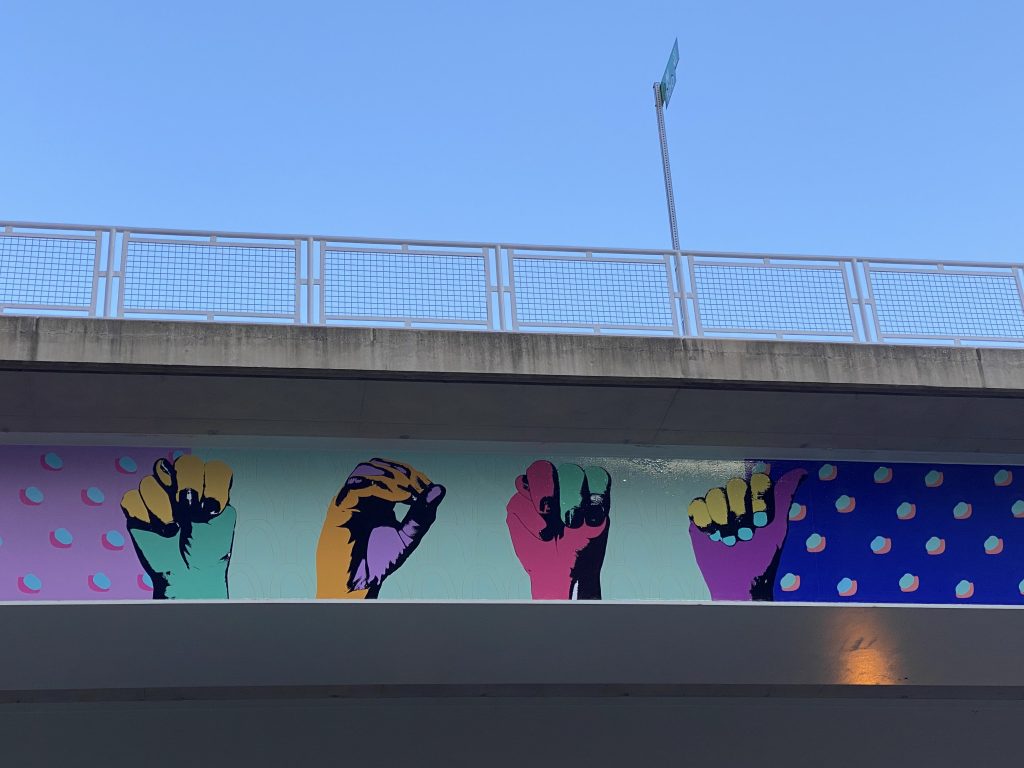
The wall art, entirely at home in a neighborhood with murals galore, was the winner of a design competition held by the NoMa Business Improvement District (BID) earlier this year.
The artist behind it is Michelle McAuliffe, an art professor at Gallaudet University for the past 15 years. Deaf since birth, McAuliffe said that when she heard about the opportunity, she knew that she wanted her design to be “a mural that represents the Deaf community” and familiarized ASL to people passing by.
“The day the mural was installed, I witnessed a man teaching his boy the alphabet in ASL. That melted my heart!” she said in an email interview.
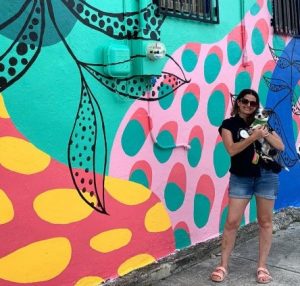
The District has over 20,000 deaf and hard-of-hearing residents and is widely considered a “Deaf-friendly city.” But most of that reputation can be attributed to the presence of Gallaudet University, established in 1864.
While Gallaudet University and its immediate community lie outside the NoMa Business Improvement District’s geographic boundaries, BID President Maura Brophy said that the BID views them as key stakeholders in the greater NoMa area. “The fact that the Red Line Metro stop in this neighborhood is named “NoMa-Gallaudet U” shows how inextricably linked we are to each other,” she said in an email interview.
The name of the Metro station was changed to its current form in 2012 and is indicative of the many changes the neighborhood has undergone in the last decade. However, even as NoMa develops into an urban, young neighborhood, issues such as public unfamiliarity with ASL, lack of translators, and rising rents are making life harder for its longtime Deaf community.
McAuliffe first visited Gallaudet University in 1994 and has lived a few minutes away from NoMa for the past decade. She said that often she gets flashbacks to how the neighborhood was in the 1990s and early 2000s.
“Whenever I’m at Union Market, I look at hearing customers and think: Where were they 20 years ago?” she said.
The growth for the Deaf community has been in Union Market, said Phyllis Brooks, a longtime former NoMa resident who now lives in neighboring Trinidad. She said that the presence of deaf workers and businesses in the area made it a popular hangout for the Gallaudet University community.
Brooks remembers NoMa back when it was “still full of nothing.” But the changes have come swiftly and fast.
“I told Edward that D.C. will look like NYC,” she said, referring to her son.
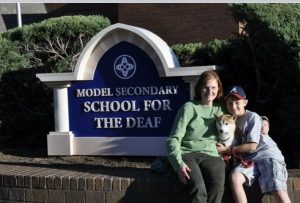
Her son, Edward Maloney, is 23, a repairman studying civil engineering, and a CODA – Child of Deaf Adults. Born to parents who both attended Gallaudet University, he grew up behind the school’s walls before moving to Trinidad. In a way, he grew up alongside NoMa.
“NoMa now has its own mini skyline of really modern buildings, which is really crazy to see,” he said. “Its center of gravity has really expanded over my lifetime.”
Maloney’s straddled both the hearing and deaf worlds, earning him a unique perspective and role in each community. He said it shaped his worldview as a child and gave him a front-row seat to how society treats its disabled population.
“It also was an education early on and just how unjust the world can be,” said Maloney. “I saw my parents face a lot of injustice, and they had to work harder and advocate for themselves more than a hearing person would.”
He recalled instances where finding interpreters for his parents to even attend public meetings or doctor’s appointments were tough. Maloney also noted the lack of access to education for deaf students and their entry into the workforce.
The result is that “they miss out on a lot of talent and a lot of intelligence that is held within the Deaf community,” said Maloney.
The District in 2021 finally established the ‘Mayor’s Office of Deaf, DeafBlind and Hard of Hearing’ and joined a list of approximately 38 state agencies for the deaf and hard of hearing in the country. Robb Dooling, an Advisory Neighborhood Commissioner (ANC) for the H Street Corridor, is one of the few deaf commissioners in the District.
His first response to the announcement of the new office was cautious relief.

“Disability representation still has a long way to go,” Dooling said in an email. “Despite our local victories, I know of no ward-level or citywide-level elected officials with a disability. This lack of representation leads to misguided decisions such as the D.C. government’s executive branch disagreeing with the idea of an Office of Deaf, DeafBlind, and Hard of Hearing throughout the full history of advocacy for the office.”
Dooling called the efforts made towards marginalized populations in rapidly developing northeast D.C. “a token approach,” with small gestures like “DeafSpace design principles and murals of people from marginalized populations on the exterior walls of luxury condos.”
Instead, he called for a more holistic approach encompassing disability, race, religion, and human diversity.
“We need deeply affordable housing and significant government support of minority-owned small businesses,” he said.
McAuliffe and Brooks also highlighted the lack of affordable housing and rising rents in NoMa as a big concern for students and faculty at the university and the surrounding Deaf community. But even beyond that, foundational issues like society’s unfamiliarity with ASL, leaves the Deaf community meeting the hearing world where they’re at and nowhere close to even halfway.
“People are more familiar with deaf people around today than the past,” Brooks said. “Still, we face some problems because they don’t know how to sign.”
“They know of us, so why don’t they learn how to sign?”

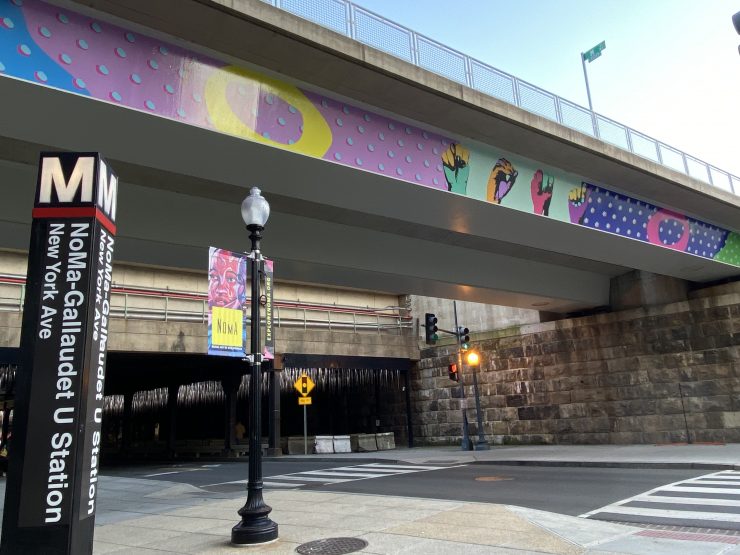
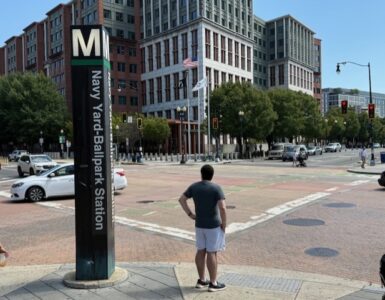
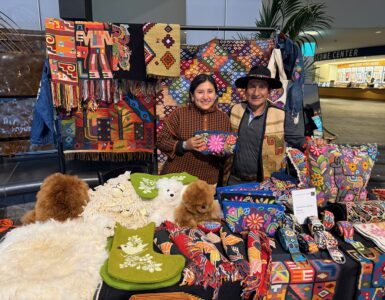
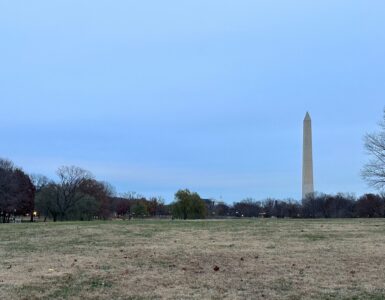










Add comment